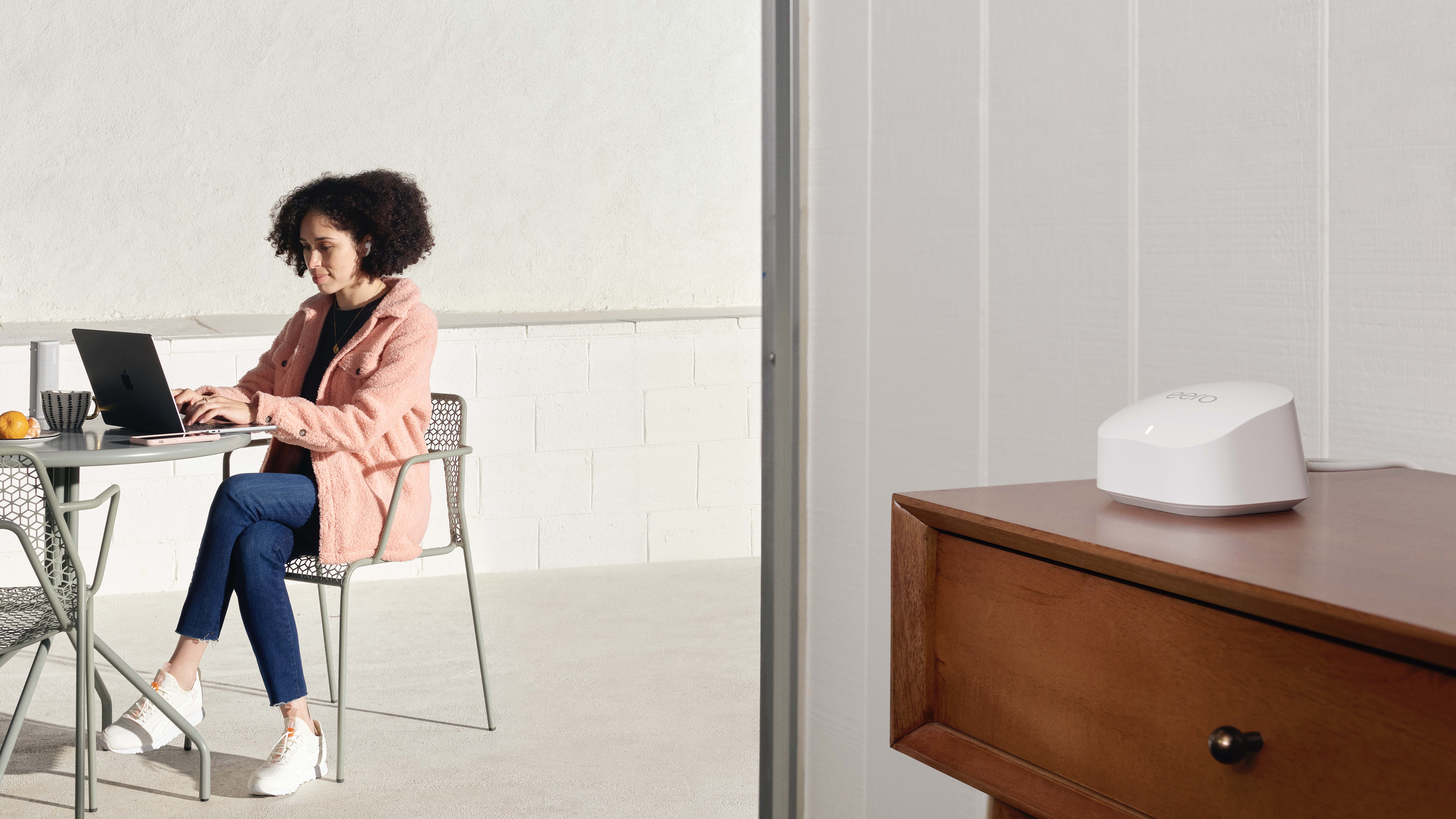New Eero mesh routers from Amazon unlock faster speeds with Wi-Fi 6E
The Eero Pro 6E and Eero 6+ add new speed tiers

What you need to know
- Eero has launched a new Eero Pro 6E offering greater speeds than the Eero Pro 6 and an Eero 6+ with faster speeds than the Eero 6.
- The Eero Pro 6E has an AXE5400 tri-band connection, 160MHz support, and a 2.5Gb Ethernet port on every node.
- The Eero 6+ has an AX3000 connection with 160MHz support, allowing for double the 5GHZ speed over the Eero 6.
Amazon's Eero typically isn't too keen on getting bogged down with the tech specs of its new routers, often taking an underpromise-and-overdeliver approach. Today, however, the retail giant has announced an update to its current Eero lineup, and it's all about the specs. The new Eero 6+ and Eero Pro 6E strengthen Amazon's position in a competitive mesh Wi-Fi market.
The Eero Pro 6E is the most impressive of the bunch with its Wi-Fi 6E connection enabling connections on the 2.4GHz, 5GHz, and 6GHz bands at once. Wi-Fi 6E uses the newly available 6GHz spectrum for the transmission of wireless data. The benefit of 6GHz spectrum is that there are many more available channels, so there's less interference from your neighbor's router.
This router also supports 160MHz bandwidth compared to 80MHz on older Eeros. This extra width means more overlap with neighboring signals making interference more likely. Wi-Fi 6E's 6GHz spectrum has much more space for 160MHz bands than 5GHz has.
The Eero Pro 6E is a tri-band AXE5400 router that breaks down to 574Mbps at 2.4GHz, 2402Mbps at 5GHz, and 2420Mbps at 6GHz. On the back, you get a USB-C port for power, a 2.5Gb Ethernet port, and a gigabit Ethernet port. Eero advertises this router as being capable of speeds up to 2.3Gbps with a combination of wired and wireless devices.
Perhaps the most impressive part about the Eero Pro 6E is that despite the new functionality, the nodes are right around the same size as the old Eero Pro 6, which is to say, small.
The more compact Eero 6+ looks a lot more like the Eero 6 but comes with 160MHz support and an expected doubling of the 5GHz band's speed. This works out to AX3000 speeds compared to the Eero 6 at AX1800. This has allowed Eero to support gigabit internet speeds with this dual-band device. Like the Eero 6, the Eero 6+ comes with dual gigabit Ethernet ports around the back.
One thing that's nice about Eeros is that they all work together, so if you've already got an Eero router or two, you can use them as mesh nodes if you want to upgrade the core of your Eero mesh system.
Get the latest news from Android Central, your trusted companion in the world of Android
As far as how many Eeros you need for your home, it's difficult to say with certainty, but Eero claims that a single Eero Pro 6E can cover up to 2,000 square feet while the smaller Eero 6+ can cover up to 1,500 square feet. Like all of the best Wi-Fi 6E mesh systems, it's a good idea to leave a little overlap. Luckily the nodes are small, so you can often position them very precisely, even if you need to mount them on a wall.

When Samuel is not writing about networking or 5G at Android Central, he spends most of his time researching computer components and obsessing over what CPU goes into the ultimate Windows 98 computer. It's the Pentium 3.




